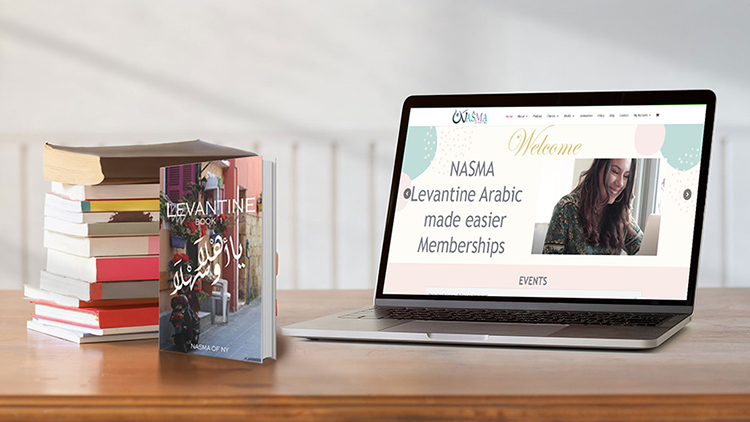The Arabic Language: A Brief Overview
If you’re reading this, you’re interested in learning Arabic online. Whether want to learn the Arabic alphabet or just brush up on your conversational skills already, it doesn’t hurt to know a little about where Arabic comes from and how it’s spoken today.
Arabic is the fifth-most-spoken language in the world, but that simple statement belies considerable complexity. Arabic has been spoken since the first century. However, time and the movement of people have split the language into dozens of dialects. Many of these dialects are quite different: an Arabic speaker from Morocco will struggle to make himself understood by an Arabic speaker from Sudan. With the introduction of the Arabic printing press in the 1800s, publishers started attempting to standardize Arabic. This was the beginning of Modern Standard Arabic (MSA).
MSA is a standardized dialect taught across the Arab world. It is an official language of more than twenty countries and an official language of the United Nations. Few people, if any, speak MSA as their mother tongue, but MSA is taught in schools and is the primary Arabic dialect used in books and other media. The Moroccan and Sudanese Arabic speakers will likely be able to communicate in MSA. Still, MSA is not often used in conversation, and most Arabic speakers use MSA only passively, such as when reading websites and watching the news.
Arabic is the official tongue of many nations, but its 400 million speakers live all around the globe. Many people living far from the Middle East take the obvious course of action and learn Arabic online.

How Many Kinds of Arabic Are There?
The answer depends on whom you ask: estimates can reach up into the dozens. Linguists lump dialects of Arabic into several groups: Egyptian, Maghrebi, Sudanese, Mesopotamian, Peninsular, and Levantine Arabic (our speciality). Some of these groups are further split into dialects, which too numerous to list in a short blog post; the total number of dialects is around three dozen. (You can see why the standardized MSA is a helpful invention!) Some of the varieties of Arabic are spoken by tens of millions, others have only a few thousand speakers.
Classical Arabic
In addition to the many varieties of Arabic spoken today, one might come across Classical Arabic. This is the Arabic that arose in the seventh century and persisted through the middle ages. Many speakers of Arabic make no distinction between Classical Arabic and MSA, considering them to be two registers of the same language. Classical Arabic is also the liturgical language of Islam.
Why Arabic?
For many, learning Arabic online is a personal method of getting in touch with one’s roots. Children and grandchildren of immigrants may not be able to speak well with their families in their homelands, and they do not always feel connected with their culture. A family in Oslo or Kyoto or Moose Jaw might struggle to find an Arabic tutor, much less a masterclass or after-school program. Being able to learn online gives those people a sense of identity and family they might not otherwise have. This was the case for our founder, Carol Haidar, who moved to New York in 2013. Teaching the language, from those just starting to learn up to conversational mastery, is her method of staying in contact with Arabic culture.
Aside from personal reasons, there are a wide variety of personal and professional reasons to learn Arabic. Those inclined to travel, of course, benefit from knowing the languages of the places they visit. Entrepreneurs who know the language can more easily make connections in burgeoning Middle East markets. And the history and culture of the Middle East fascinate scholars and laypeople alike. And nothing quite stimulates the intellect of a child as learning another language.
A Very Good Place to Start: Learn the Arabic Alphabet
To someone who knows only the Latin alphabet, the Arabic alphabet looks hopelessly complicated. A few basic facts provide a good start to greater understanding:
- Arabic is written and read from right to left. Numbers read left to right.
- There are twenty-eight letters in the Arabic alphabet. All are consonants.
- Vowels are often omitted entirely. Three consonants can also represent vowels, and diacritic marks also indicate certain vowels.
- There are no uppercase or lowercase letters, but the shape of letters can change depending on whether the letter is a first, last, or middle letter of a word, or if it stands alone.
Arabic is a phonemic language. That is, the letters correspond closely with the sounds they represent. Spare a moment of thought for those unfortunate people who are learning English, puzzling over cough, though, bough, and through. Arabic is much simpler once you know what sounds match with what letters.
Most adult study materials for Arabic, including our own, include both Arabic text and Latin phonetics. This makes it easy to learn to read, write, and speak all at the same time.
Options for Learning Arabic Online

Interested in our online classes? We offer several different options to help you learn.
1. Private Lessons: one of our dedicated private instructors will assist you in learning Modern Standard Arabic or the Levantine dialect.
2. Kids’ Program: Starting at age three, we offer six-week programs designed to give young children an early start on speaking Levantine Arabic.
3. Levantine Masterclass: For people fourteen and older, our online masterclass features a curriculum and course materials written by Nasma’s founder, Carol Haidar. Courses are suitable for beginners, so you’ll learn the Arabic alphabet and work your way up from there. Learn at your own pace with weekly instructional videos, homework, and Zoom meetings.
Right now, we are offering a fourteen-day free trial of our masterclass, so you can start to learn Levantine Arabic for free. See if it’s right for you, and don’t hesitate to get in touch if you have a question.

